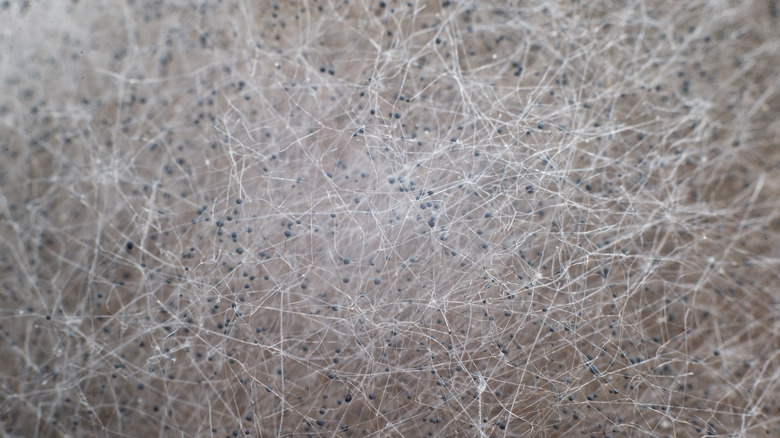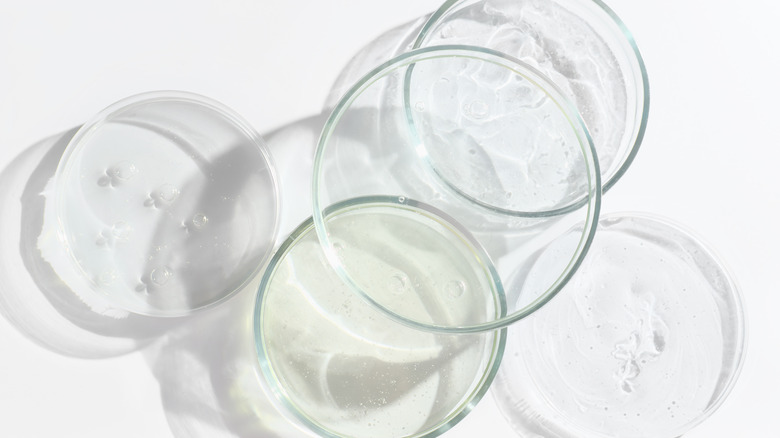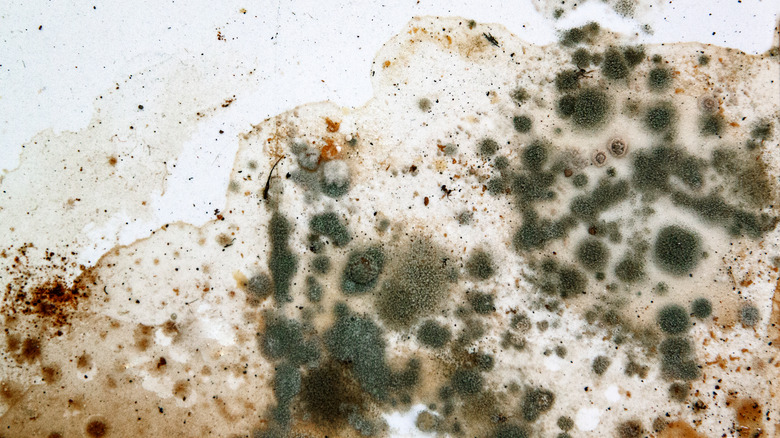Here's How To Test If There Is Mold In Your House
A mold infestation is a homeowner's nightmare. Homes inherently have four things mold craves: oxygen, darkness, warmth, and a surface on which to settle. Add a fifth — water — and boom, you have a problem, according to Molekule. The resulting telltale mustiness and discoloration are signs to call in a pro, or at the very least, a reason to run to your nearest home improvement store for a DIY test kit.
Mold can cause health problems ranging from mild to severe, Poison notes. Respiratory issues, headaches, and allergies are just some of them. In addition, the fungi may damage your home, impacting your quality of life. In any case, mold needs to be located, identified by type, and removed.
There are several schools of thought as to when and whether testing is indicated, if a home kit is sufficient, or if a mold pro is needed. A selection of do-it-yourself tests is available, ranging in price from $10 to as much as $250. MYMOVE asserts verifying the presence of mold only requires a home test kit and personal safety gear; however, the EPA is skeptical of the test kits and recommends enlisting a certified inspector. Some experts even say the eye and smell test is all needed to find mold in your house.
Types of tests
The most basic home test is reminiscent of your high school biology experiments. The kit comprises a petri dish coated with a medium that encourages mold growth. Place it where mold is suspected or swab a sample directly on it and wait 48 hours for the spores to accumulate. Then tape and seal the dish and store it in a dark place. If no evidence is visible after five days, that area is mold-free. If the dish exhibits spores, send the specimen to the designated lab.
You can also test for mold in an air conditioner by blowing air directly on the testing dish. Moldpedia cautions that mold spores must be living for a culture test to be accurate, although inactive particles can still be harmful. Another type of home test has a reusable air pump and a container for collecting air samples. Samples sent to a lab will be analyzed for type and level of concentration.
However, in the view of the Government of Canada, the air tests are flawed. Mold exists in nature, and a positive air test is not definitive proof of an unhealthy situation. A bulk test is another method of exposing mold. A lab can examine and analyze suspicious samples of material taken from the home, determine if mold is present, and calculate its concentration. Mold spores grow quickly, so their numbers and location can change. Therefore, an accurate assessment requires multiple tests undertaken at various times.
Amateur or pro?
Mold-Advisor explains that DIY kits may not be trustworthy: Faulty testing techniques may result in bogus results. Home kits may also fall short of identifying toxic black mold, the most harmful variety. One tainted area undoubtedly indicates others, per Inside & Out Property Inspectors, which also warns that a serious black mold invasion could require a temporary evacuation. You may need a doctor's visit and blood tests to confirm exposure.
According to Legacy Land Trust, bleach is another means of testing for mold. A few drops on a discolored surface will tell the tale. If it lightens, chances are there is mold, not dirt. If you suspect there is contamination behind drywall, poking a hole in it might expose spores behind it.
One way or the other, it is helpful to know where mold is most likely to exist. A basement is mold headquarters, and vents, attics, or crawl spaces are hospitable areas. Molds favor bathrooms, kitchens, mattresses, and even indoor plants. Anywhere that previously had a leak or flood is susceptible. Air Oasis suggests a mold test is in order when purchasing a home if your residence is extremely humid or if it has a funky odor. Those with chronic health conditions may also consider testing for mold. Household mold is obviously a problem, and knowing a test might reveal it is a relief. However, hiring a pro may be the way to go if money is no object.


